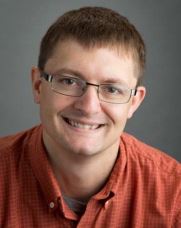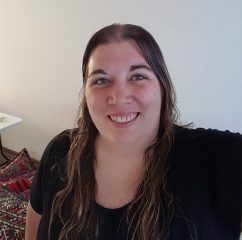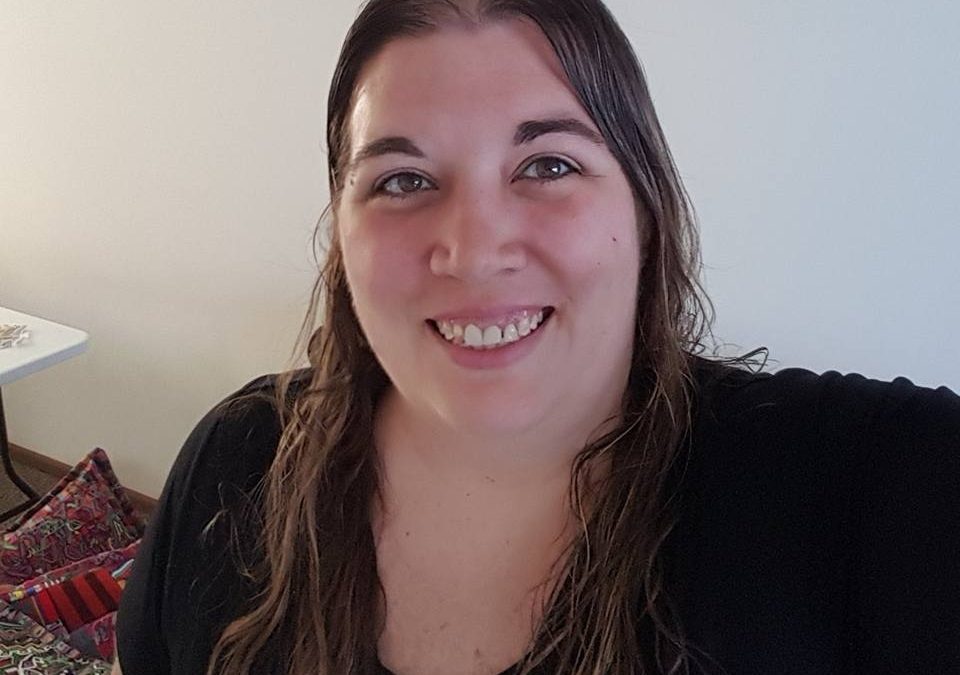Two University of Wisconsin Oshkosh math alumni who turned their love of numbers into careers in higher education returned to their alma mater in November to share their success with current students.
 Math and physics grad Tyler Skorczewski ’04, an assistant professor at UW-Stout, spoke about mathematical models in blood clotting, while math education grad Natalia Bailey ’08, an assistant professor of mathematics education at the University of Central Missouri, talked about constructivist learning theory.
Math and physics grad Tyler Skorczewski ’04, an assistant professor at UW-Stout, spoke about mathematical models in blood clotting, while math education grad Natalia Bailey ’08, an assistant professor of mathematics education at the University of Central Missouri, talked about constructivist learning theory.
Contrary to popular opinion that mathematics is just about getting the right answer, both Skorczewski and Bailey said there is much room in mathematics for creativity.
“There are a lot of cool problems in applied mathematics,” Skorczewski said. “But there are no back-of-the book answers and you are wrong more often than you are right.”
In a colloquium on campus, Skorczewski talked about his work using fluid dynamics to understand blood clotting.
“The immersed boundary method can be used as a mathematical modeling framework to study both the fluid structure interactions of platelets moving in a blood vessel and how the platelets bind to the vessel wall in response to injury,” he said.
Skorczewski said he became interested in applied mathematics through an internship with Kimberly Clark as an undergrad student at UWO. He went on to earn a doctorate at the University of California-Davis. Before his first position as a professor at Cornell College in Iowa, he did post-doctoral work at the University of Utah.
Because applied mathematics touches on a number of disciplines, such as biology, chemistry, physics and computer science, Skorczewski said he always is learning something new and collaborating with colleagues across departments and others universities.
 Bailey, who recently earned a doctorate in math education at UW-Madison, said math is her passion.
Bailey, who recently earned a doctorate in math education at UW-Madison, said math is her passion.
“A lot of people think math is about getting the right answer, but real math is not so cut and dried and has a lot more creativity to it,” she said.
In her presentation on campus, Bailey discussed “Unlocking Potential: Open-Ended Problems, Early Algebra and Growth in Questioning” with future teachers, students, faculty and staff. She shared connections to her own research with pre-service teachers in the U.S. and with practicing teachers in Guatemala to explain how attitudes and beliefs about math can shift with the use of different mathematics problems and the discourse that follows.
Bailey is more interested in finding ways to teach students how to reason and think through a math problem than how to get the correct answer. She often poses open-ended problems that have several entry and exit points. For example, she may say to a class: “Today’s number is 40. Think of all the ways to make 40.”
At the University of Central Missouri, Bailey teaches a number of courses, including mathematics modeling, math for middle school, elementary math and the history of math.
Learn more:

